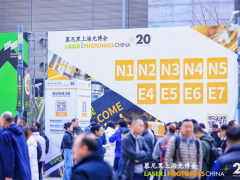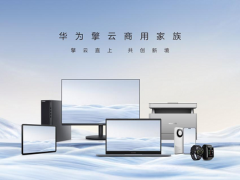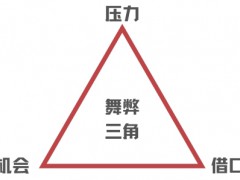???? 據石油世界期刊3月2日蒙得維的亞報道,根據烏拉圭國有石油公司Ancap表示,如果烏拉圭能說服私營部門投資者支持利用該國豐富的可再生能源資產生產綠色燃料氫的努力,該國可能在2020年代末成為一個氫出口國。
????該國政府正在為其首個氫燃料測試項目制定指導方針和激勵措施,比如減稅,并計劃最早于本月向投資者推銷該項目。Ancap董事長亞歷杭德羅?斯蒂帕尼克(Alejandro Stipanicic)在接受采訪時表示,今年可能會通過競爭過程選出至少一家贊助商。
????利用可再生電力將水分解為氫和氧的所謂綠色氫,正在成為一種潛在的替代能源,以幫助減少溫室氣體。 Stipanicic稱,烏拉圭有大量的清潔能源來自風能,太陽能和水力發電項目,以及深水大西洋港口,這將使該國進入主要的出口市場。
????我們將把氫作為一種可再生能源引入家庭使用。 但是最大的賭注是氫出口。
????Stipanicic表示,Ancap在過去10年中有6年虧損,有限的投資預算意味著其需要“創新”才能擴展到氫行業。一個向歐盟等市場出口氫的項目可能需要5-8年的時間來開發,根據今天的技術,很容易需要至少10億美元的投資。
????這家擁有89年歷史的公司的前身是波特蘭國家可燃酒精管理局,其已經擁有為其煉油廠生產氫氣的專業技術,并在蒙得維的亞港附近擁有一塊場地,可以租賃或出資組建一家合資企業。
????Ancap還可以利用其作為石油行業監管機構的角色,拍賣海上風電場,這些風電場可以為生產氫氣和氨的電解槽提供電力。Stipanicic稱,該公司的海上石油和天然氣勘探合同讓該公司可以選擇在第三方具有商業可行性的發現中持有少數股權,這些交易可以作為氫合資企業的模式。
????過去10年,投資者在開發風能、太陽能和生物質能發電廠方面投入了數十億美元。除了水電,他們去年提供了全國約93%的電力。烏拉圭也有大量的電力盈余,其中一些是目前出口的,但可以用來生產氫氣。根據彭博社的一份報告稱,電解設備的成本正在下降,將氫氣轉化為氨氣將使海運更經濟。
????Stipanicic表示,這個想法是讓Ancap在“氫氣業務”上有某種參與。但我們不會主導投資。私營部門將進行投資。
????郝芬 譯自 石油世界期刊
????原文如下:
????Uruguay's Ancap moves toward the hydrogen clean-energy era
????Uruguay could become a hydrogen exporter by the end of the decade if it can convince private-sector investors to back efforts to use the country’s abundant renewable-energy assets to produce the green fuel, according to the state-run oil company Ancap.
????The government is developing guidelines and incentives such as tax breaks for its first hydrogen fuel test project and plans to pitch it to investors as soon as this month. At least one backer will probably be selected through a competitive process this year, Alejandro Stipanicic, Ancap’s chairman, said in an interview.
????So-called green hydrogen, which uses renewable electricity to split water into hydrogen and oxygen, is emerging as a potential alternative energy source to help reduce greenhouse gases. Uruguay has a glut of clean energy from wind, solar and hydropower projects, as well as a deepwater Atlantic Ocean port that would give the nation access to key export markets, Stipanicic said.
????“We are going to introduce hydrogen as a source of renewable energy” for domestic use, Stipanicic said. “But the big bet is hydrogen exports.”
????Ancap has lost money in six of the past 10 years and a limited investment budget means it will need to be “creative” to expand into the hydrogen industry, Stipanicic said. A project to export hydrogen to markets such as the European Union would likely take five to eight years to develop and could easily require an investment of at least $1 billion based on today’s technology.
????The 89-year-old company, formally Administracion Nacional De Combustibles Alcohol Y Portland, already has expertise in producing hydrogen for its refinery and owns a site near the port of Montevideo that it could lease or contribute to a joint venture.
????Ancap also could leverage its role as oil-industry regulator to auction offshore blocs for wind farms that could power electrolyzers that produce hydrogen and an ammonia plant. The company’s offshore oil and natural gas exploration contracts give the company an option to take minority stakes in commercially viable discoveries by third parties, and those deals could serve as a model for a hydrogen venture, Stipanicic said.
????Investors poured billions into developing wind, solar and biomass power plants in the past decade. Along with hydropower, they supplied about 93% of the country’s electricity last year. Uruguay also has a significant electricity surplus, some of which it currently exports, but which could be used instead for producing hydrogen. Electrolyzing equipment costs are falling and converting hydrogen to ammonia would make it economical to transport by ship, according to a BloombergNEF report.
????“The idea is for Ancap to have some sort of participation” in the hydrogen business, Stipanicic said. “But we aren’t going to lead the investment. The private sector will make the investment.”







